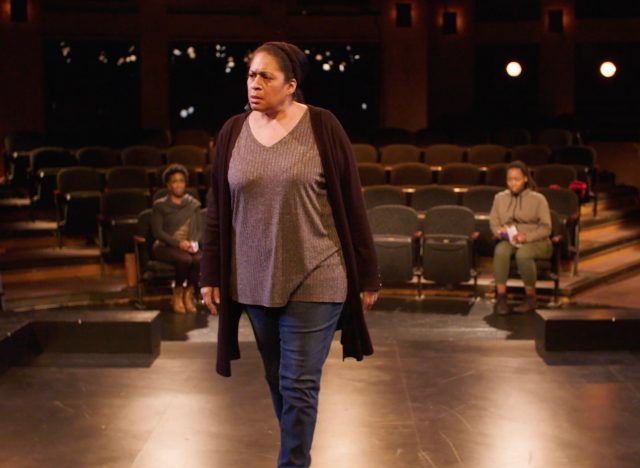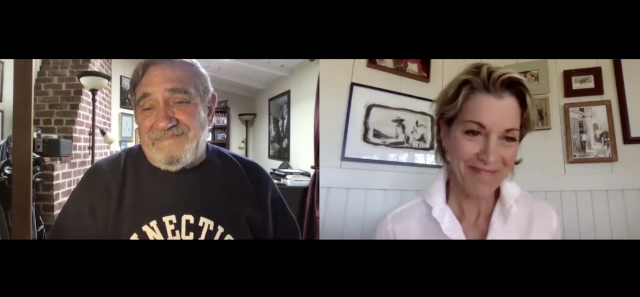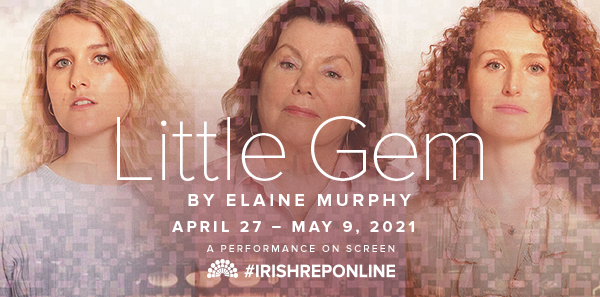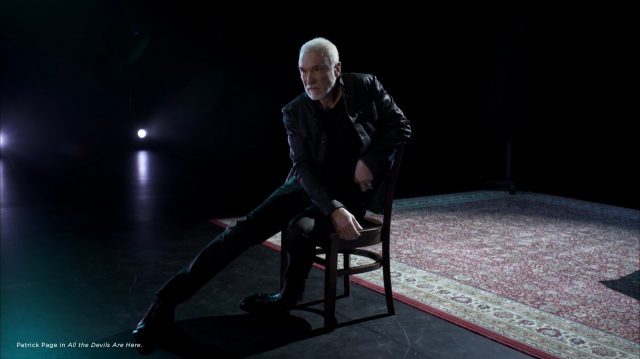THE LAST FIVE YEARS
Extended through May 9
Tickets: $32.50 for time-specific single stream, $47.50 for forty-eight-hour on-demand viewing with behind-the-scenes featurette
www.ootbtheatrics.com/l5y
“I think you’re really gonna like this show / I’m pretty sure it doesn’t suck / See, you’re laughing, and I’m smiling,” Cathy Hiatt (Nasia Thomas) sings early in Jason Michael Webb’s exhilarating, intimate, and emotional adaptation of Jason Robert Brown’s 2001 two-character sung-through musical, The Last Five Years. Produced by Out of the Box Theatrics, Holmdel Theatre Company, and Blair Russell, this online version, streaming through May 9, was rehearsed remotely and filmed in a cramped New York City apartment, with director of photography and videographer Brian Bon using a handheld camera, lending an immediacy and urgency to the proceedings, as well as an overwhelming feeling of claustrophobia as Jewish writer Jamie Wellerstein (Nicholas Edwards) and actress Cathy journey across the beginning, middle, and end of a relationship, told backward by Cathy but chronologically by Jamie. When career success seems imminent for one but not the other, jealousy and envy threaten their love, made all the more intense by the close quarters necessitated by Covid-19 restrictions.
As Cathy and Jamie make their way through the apartment, they encounter keyboardist and associate music director Cynthia Meng, cellist Sterling Elliott, violist Orlando Wells, guitarist Jonathan Linden, bassist Chelton Grey, and drummer Brandon Brooks sitting in corners, relaxing on the bed, or suddenly appearing in the living room or kitchen, performing poignant orchestrations of such songs as “Still Hurting,” “The Schmuel Song,” “The Next Ten Minutes,” and “A Miracle Would Happen / When You Come Home to Me.” Casting two people of color and not changing the script — the original production in Skokie starred Lauren Kennedy (replaced by Sherie Rene Scott) and Norbert Leo Butz — lead to scenes both moving and, at times, humorous, as when Jamie considers his potential romantic partners in “Shiksa Goddess,” explaining, “I’ve been waiting through Danica Schwartz and Erica Weiss / And the Handelman twins / I’ve been waiting through Heather Greenblatt, Annie Mincus, Karen Pincus, and Lisa Katz / And Stacy Rosen, Ellen Kaplan, Julie Silber, and Janie Stein / I’ve had Shabbos dinners on Friday nights / With every Shapiro in Washington Heights” as photos of the women are projected on the wall behind him. But at the heart of the story is a universality that transcends race, religion, or ethnicity as two people try to build a life together.
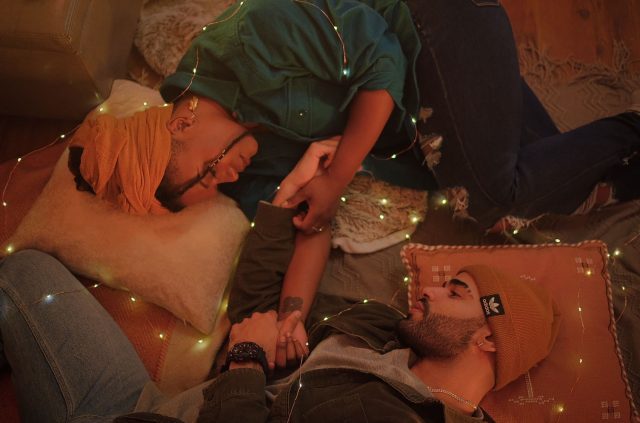
Cathy (Nasia Thomas) and Jamie (Nicholas Edwards) tell their story in opposite directions in The Last Five Years (photo © Gerald Malaval)
Thomas (Ain’t Too Proud: The Life and Times of the Temptations, Beautiful: The Carole King Musical) and Edwards (Godspell, Frozen) are utterly engaging as Cathy and Jamie; you are instantly drawn into their orbit, rooting for them even when you know what’s going to happen from the very first song. Thomas is particularly captivating as Cathy digs deep into who she is and what she desires. Tony winner Webb (The Color Purple, Choir Boy) shoots some of the scenes without cuts as the camera winds through multiple rooms, making the most of the surroundings, which feature a fun production design by Adam Honoré that includes lots of books, theatrical posters, and Playbills; the costumes are by Siene Zoë Allen, with sound by Nicole Maupin and Carin M. Ford. Brown (13, The Bridges of Madison County) won Drama Desk Awards for Best Music and Best Lyrics back in 2002; two decades later, The Last Five Years is as fresh and alive as ever. It definitely doesn’t suck.
